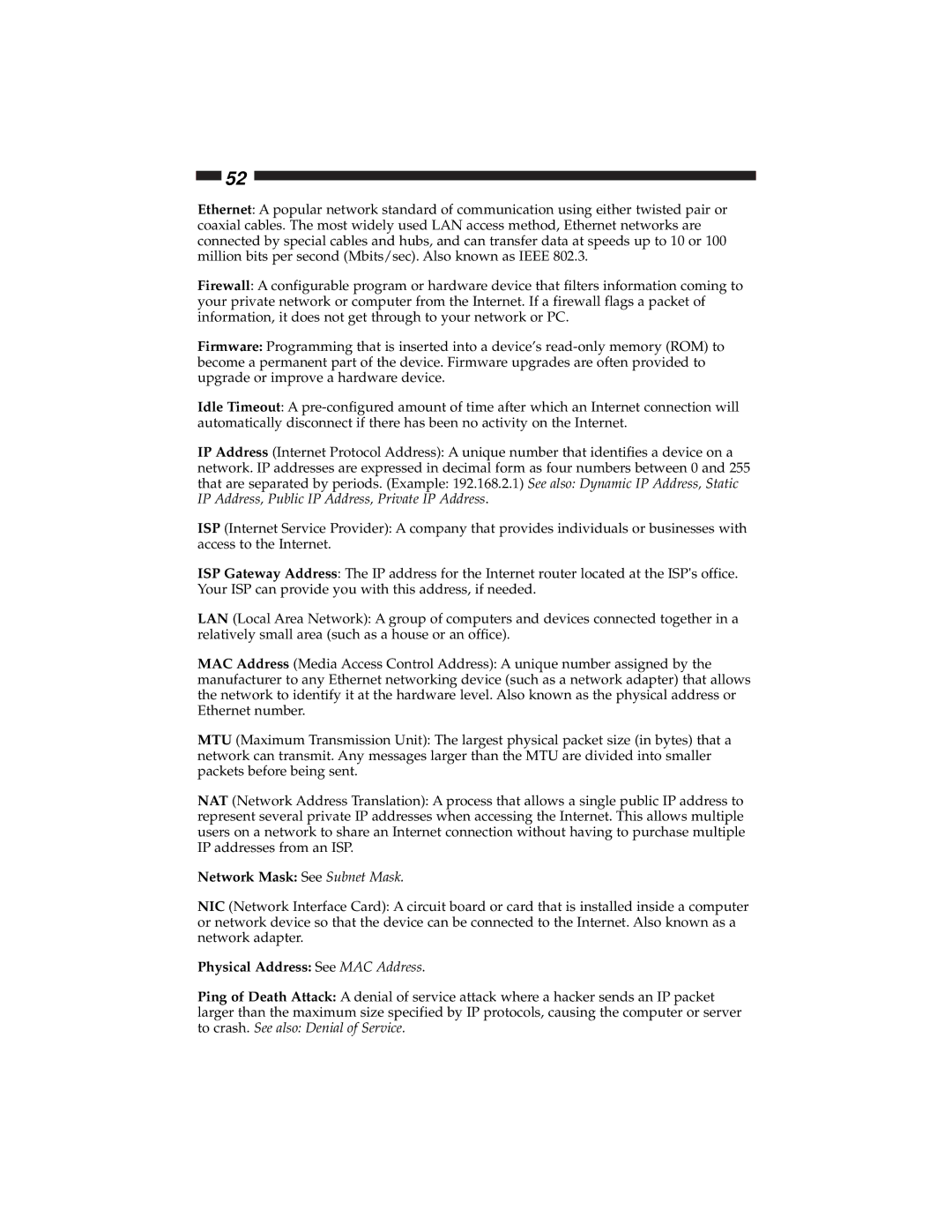52
Ethernet: A popular network standard of communication using either twisted pair or coaxial cables. The most widely used LAN access method, Ethernet networks are connected by special cables and hubs, and can transfer data at speeds up to 10 or 100 million bits per second (Mbits/sec). Also known as IEEE 802.3.
Firewall: A configurable program or hardware device that filters information coming to your private network or computer from the Internet. If a firewall flags a packet of information, it does not get through to your network or PC.
Firmware: Programming that is inserted into a device’s
Idle Timeout: A
IP Address (Internet Protocol Address): A unique number that identifies a device on a network. IP addresses are expressed in decimal form as four numbers between 0 and 255 that are separated by periods. (Example: 192.168.2.1) See also: Dynamic IP Address, Static IP Address, Public IP Address, Private IP Address.
ISP (Internet Service Provider): A company that provides individuals or businesses with access to the Internet.
ISP Gateway Address: The IP address for the Internet router located at the ISP's office. Your ISP can provide you with this address, if needed.
LAN (Local Area Network): A group of computers and devices connected together in a relatively small area (such as a house or an office).
MAC Address (Media Access Control Address): A unique number assigned by the manufacturer to any Ethernet networking device (such as a network adapter) that allows the network to identify it at the hardware level. Also known as the physical address or Ethernet number.
MTU (Maximum Transmission Unit): The largest physical packet size (in bytes) that a network can transmit. Any messages larger than the MTU are divided into smaller packets before being sent.
NAT (Network Address Translation): A process that allows a single public IP address to represent several private IP addresses when accessing the Internet. This allows multiple users on a network to share an Internet connection without having to purchase multiple IP addresses from an ISP.
Network Mask: See Subnet Mask.
NIC (Network Interface Card): A circuit board or card that is installed inside a computer or network device so that the device can be connected to the Internet. Also known as a network adapter.
Physical Address: See MAC Address.
Ping of Death Attack: A denial of service attack where a hacker sends an IP packet larger than the maximum size specified by IP protocols, causing the computer or server to crash. See also: Denial of Service.
